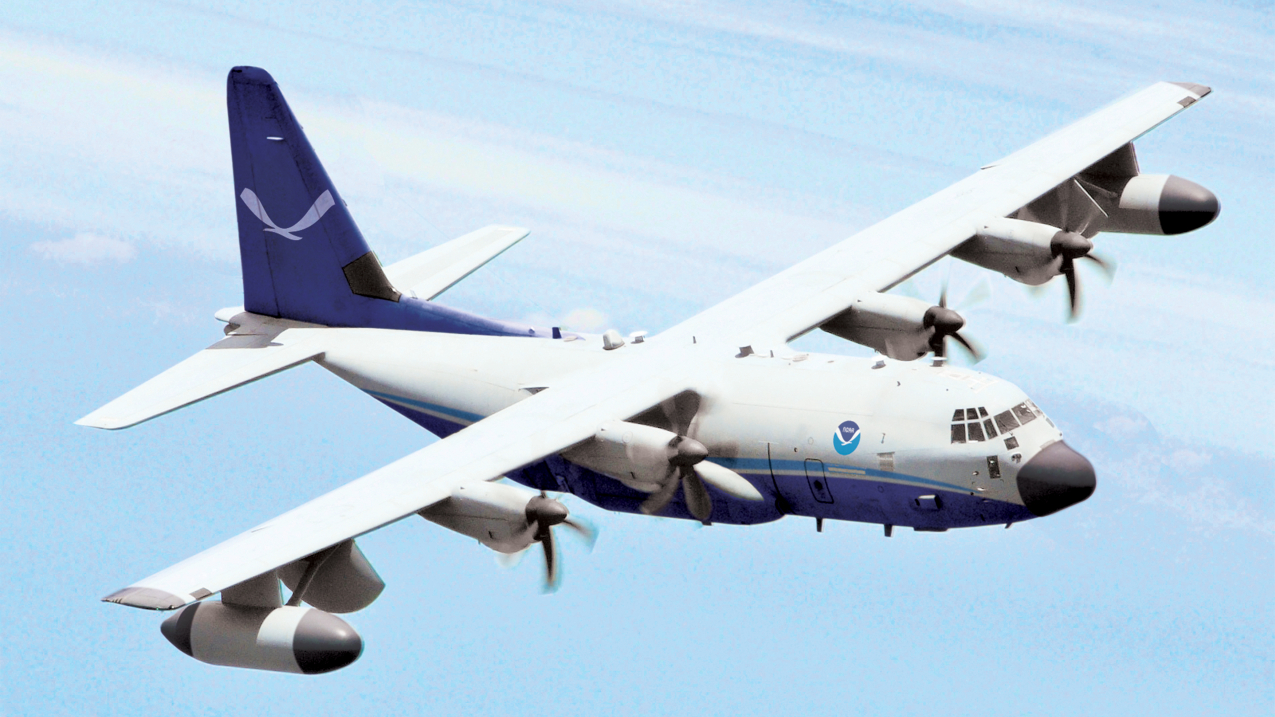Today, NOAA announced that it has awarded a contract to Lockheed Martin Aeronautics, based in Georgia, for two specialized C-130J Hercules aircraft to become the next generation of NOAA hurricane hunter aircraft. The four-engine aircraft is a proven platform for hurricane reconnaissance. The planes will be modified to serve as flying laboratories in support of NOAA’s hurricane and environmental research.
“NOAA is continuing to make critical investments to help protect lives and property,” said NOAA Administrator Rick Spinrad, Ph.D. “These new aircraft will be filled with state-of-the-art technology developed by NOAA and our partners, greatly enhancing our ability to gather critical data on hurricanes, atmospheric rivers and our changing climate.”
Funded in part by the 2023 Disaster Relief Supplemental Appropriations Act, the fully-instrumented aircraft are expected to join NOAA’s fleet in 2030. They will replace the long-serving WP-3D Orions, which have operated since the mid-1970s.
The contract covers acquisition of two C-130J Hercules aircraft and the NOAA-specific design efforts, with options for additional aircraft. With demand for specialized weather data continuing to grow from the research and emergency response communities, modernizing NOAA’s aircraft fleet is critical to delivering on these future operational and science demands.
When aircraft data are available, hurricane track and intensity forecasts are improved by more than 15-20% in track accuracy and 10-15% in intensity forecasts. Longer lead-time for tropical cyclone forecasts are imperative as coastal populations and infrastructure continue to grow and evacuation decision times increase.
“Adding these highly capable C-130J aircraft to our fleet ensures NOAA can continue to provide the public, decision-makers and researchers with accurate, timely and life-saving information about extreme weather events,” said Rear Adm. Chad Cary, director of the NOAA Commissioned Officer Corps and NOAA Marine and Aviation Operations. “NOAA is using our more than 50 years of experience gathering data on hurricanes and other atmospheric phenomena to enhance the capabilities of these specialized new aircraft.”
The new C-130Js are cargo-type aircraft, which will allow NOAA to accommodate larger science payloads. They will be equipped with a variety of updated instrumentation developed from experience with NOAA’s current WP-3D Orion aircraft and from across the U.S. government.
Both new aircraft will be customized with the same Multi-Mode Radar as the P-3s, as well as new automated dropsonde launchers, high speed internet connectivity, vertically scanning doppler radar and instrument ports for a variety of research instruments for surface winds, waves and oceanographic sensing. The C-130Js will also be able to launch and control uncrewed aircraft systems that expand the reach of the aircraft into new and under-measured areas of the storm environment.
These new aircraft will continue the legacy of the P-3s by supporting hurricane forecasting and research, tornado research, atmospheric rivers research and forecasting, satellite calibration and validation, fire weather and atmospheric chemistry and pollution tracking. The aircraft will also carry expanded mission capabilities that include long endurance coastal mapping, gravity measurements and transport capabilities to support worldwide deployments.
The C-130Js will be based at the NOAA Aircraft Operations Center in Lakeland, Florida, along with NOAA’s other specialized environmental data-gathering aircraft. The fleet is operated, managed and maintained by a combination of NOAA Corps officers and civilian personnel.
Climate, weather, and water affect all life on our ocean planet. NOAA’s mission is to understand and predict our changing environment, from the deep sea to outer space, and to manage and conserve America’s coastal and marine resources.
Source link


